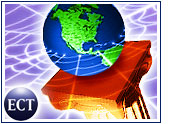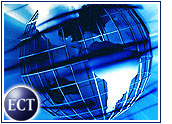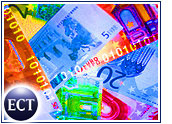
Latin America, as commonly defined, extends from the U.S.-Mexico border in the north to Argentina’s remote Tierra del Fuego peninsula in the south. Yet, although many Latin American countries share similar languages and cultural heritage, it would be a mistake to consider the region as a homogenous market. Latin America is characterized by great diversity and strong, pervasive feelings of national, cultural and ethnic identity. This is no less true when it comes to development of e-businesses and applications in the region.
It may come as no surprise that the economic giants of the region, Brazil and Mexico, are leading the way in terms of developing e-commerce businesses and the requisite infrastructure, legal and regulatory foundations necessary to support them. Argentina, Chile, Venezuela and Colombia, despite the latter two nations’ almost-continuous political strife, make up a second tier of countries with modern urban centers, domestic economies, and institutions and markets of sufficient size and sophistication to sustain their own e-commerce industries.
A few smaller countries, such as Costa Rica and Panama, given their unique historical development and geography, also are making headway in the e-commerce field. Others that are more economically challenged or that have less-developed resources, such as Bolivia, Ecuador, Guatemala, Guyana and Honduras, are making some e-commerce progress but also face more substantial hurdles in developing sustainable, healthy markets.
Legacy of the ’90s
The 1990s saw Latin American countries — like their “developing country” counterparts in Asia — benefit from large inflows of direct foreign investment as well as mergers-and-acquisitions activity. This tremendous influx of funds was in large part driven by the speculative Internet and telecommunications investment booms, which withered with the bursting of the U.S. stock market bubble in 2000.
On the positive side, the late-1990s economic boom enabled nations throughout Latin America to lay groundwork for their first e-commerce and wireless telecommunications networks. However, it also highlighted the risks of investing too heavily and too quickly in countries lacking stable, trustworthy and reliable political, economic and legal-regulatory institutions and organizations. Chronically high poverty and illiteracy rates and poor educational standards, laws and regulations compound the problems common to the region.
Banks and Financial Services Riding the Wave
However, e-business is far from dead in Latin America. Banking and financial services organizations have been at the forefront of e-commerce development in the region — and the finance industry is viewed as something of a harbinger of e-business trends, as well as of the globalization process that began in the 1980s and extended worldwide in the ’90s.
For example, financial exchanges and their member banks and brokerages in Latin America were quick to shift from floor-driven trading to remote private IP- and Internet-based electronic trading networks — and were likewise quick to introduce e-banking and e-brokerage systems for their clients. This trend continues today, but with a heightened focus on strengthening security and industry-wide self-regulatory capabilities, ensuring data privacy and adding to e-banking and brokerage data and transaction systems capabilities.
The Bolsa de Santiago in Chile (Stock Exchange of Santiago) is a case in point. The exchange is in the midst of going through a “voluntary” risk assessment and evaluation, part of a long-term project coordinated by the World Bank and International Monetary Fund (IMF) involving nearly every exchange in Latin America. The result has been a substantial rewriting of the exchange’s and its member brokerages’ operations and employee manuals in light of new rules. Those regulations govern use of Web-based information and e-commerce systems and include rules regarding exchange and member firm employees’ use of e-mail systems and PDAs, according to an exchange spokesperson.
For its part, Costa Rica’s government is expected to publish norms this month that will allow Sugef, a banking regulator, to monitor electronic transactions for signs of irregular activity, such as laundering, Costa Rican daily newspaper La Republica quoted Sugef head Juan Munoz as saying. However, for effective monitoring of adherence to the norms, banks would need to adjust their IT systems, and Sugef would need more staff and resources, Munoz said. At present, Sugef’s laundering control activities are limited to analysis of cash transactions that the banks themselves pinpoint as suspicious, according to the newspaper’s report.
Governments Playing an Active Role
Governments around the region also are actively developing and making use of e-commerce systems, with emphasis on the security of proprietary information. Recently, the Panamanian government announced it will have a Web-based “e-procurement” system up and running by May. Panama’s e-procurement site, dubbed “e-compras,” will enable the central government to conduct tender offers for government contracts offered by all central government departments, Ivette de Castillero, the Panamanian comptroller general’s IT director, told the E-Commerce Times.
Additional evidence of a heightened region-wide awareness of and emphasis on security was recently reported in the Mexican press, according to news aggregator and service provider Business News Americas. At least five digital certification companies, including U.S. software and services vendor VeriSign, are waiting for Mexico’s economy ministry to publish regulations that will pave the way for these companies to enter the Mexican market, government officials told reporters. The Mexican government expects associations representing notaries and stockbrokers to register their members as certifiers, but the government also has seen interest from independent local companies and chambers of commerce, such as the Chile-Mexico and Colombia-Mexico chambers, they added.
Meanwhile, in Brazil, Latin America’s largest economy, market research company Ibope-NetRatings released the results of a poll on March 1st indicating “a higher percentage of Brazilian internet users visit government sites than anywhere else in the world.” Poll findings showed 35 percent of Brazilian Internet users, or 4.2 million people, visited a government Web site in January. Sweden, with 34 percent of Internet users visiting a government site, and France, with 31.2 percent, followed. The most-visited site in January was the Sao Paulo city government site, which logged more visits than the United States’ official White House portal, with 1.31 million hits.
Mobile Telecoms on the Move
Meanwhile, with wireline networks less developed than in the United States, mobile telecommunications providers throughout the region are seeking a central role at the nexus of e-commerce networks throughout Latin America. They are moving forward aggressively with plans to develop and deploy digital wireless networks, based on the GSM and 3G (third generation) standards that can provide access to e-commerce businesses and systems.
In the 12-month period ended in the third quarter of 2003, GSM networks in Latin America registered 146 percent growth, with Brazil and Mexico responsible for the majority of those gains, according to the EMC World Cellular Database. According to Erasmo Rojas, 3G Americas director for Latin America and the Caribbean, Brazilian GSM service providers added 4.51 million new subscribers during the period, while their counterparts in Mexico added 2.16 million new subscribers.
Changing the Status Quo?
Rapid growth of wireless telecommunications and the GSM standard in particular has brought significant socioeconomic benefits to Latin America as well as developing countries worldwide, according to Gareth Jenkins, Deutsche Bank’s senior telecoms analyst.
“The deployment of GSM has helped to bridge the digital divide and bring modern telecommunications to chronically underserved communities in Africa, Asia and Latin America,” Jenkins told the E-Commerce Times. “As we rapidly evolve towards a wireless information society that will bring about convergence of mobility and the Internet, GSM is continuing to play a crucial role in facilitating the transition to the next generation of mobile telecommunications services.”
Overall, Jenkins expressed optimism that convergence between wireless telephony and Internet-based e-commerce and communications systems will be realized, but he and his team also pointed out potential obstacles.
In a Deutsche Bank telecoms research report released March 1st, Jenkins noted: “The regulatory regime in the target country can be the greatest obstacle (or assistance) in implementing a GSM network. Oftentimes, in developing nations, the incumbent operator has only a wireline network and is government owned. The entry of a mobile operator is seen as a potential threat, and pressure is put on the government to resist this change in the status quo.”
If Latin American governments can overcome those negative pressures, their e-business efforts may emerge from the downturn into an era of growth and prosperity.

















































Social Media
See all Social Media